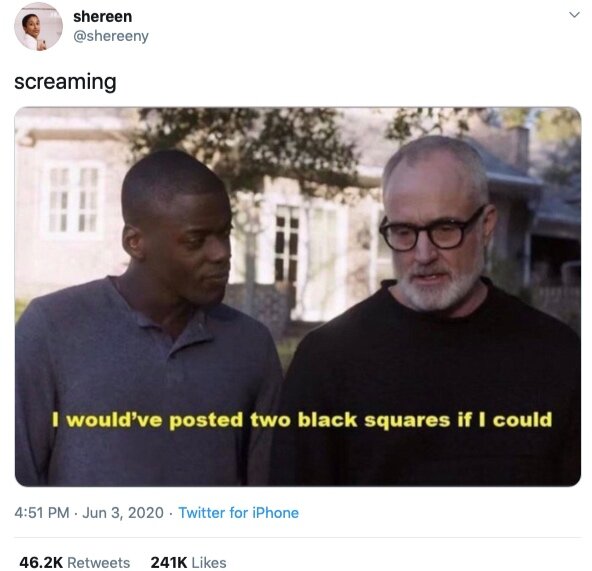Re-Evaluate Your Activism
Advocacy is a lifelong commitment, and these fights don’t end when the media stops covering them. As accomplices, it is our responsibility to set ourselves up for sustainable engagement in social justice movements for the long term.
This week for me has entailed a lot of reflection on how to best do that, as it’s unfortunately been a week of debilitating personal grief — which has forced me to constantly re-evaluate my capacity to contribute to causes productively, specifically the Black Lives Matter movement. If we’re in it for the long haul, where does wellbeing fit in the conversation?
One strategy that I’ve found helpful is to break down actions into three categories:
Low-capacity actions require minimal mental or emotional labour. These might include buying from black-owned businesses, signing petitions, or donating. Tons of location-specific lists have been compiled for easy access by reputable sources, so it takes little time to Google them, then contribute in a meaningful way. Personally, I used this list to find bail funds seeking donations and also chose to donate to the Black Solidarity Fund and Black Heath Alliance. Even if you don’t have funds to spare, ways to donate still exist, such as by watching monetized YouTube videos.
Another action that falls into this category is re-posting or sharing content from Black people and BIPOC activists on social media, though this is where it’s especially important to think critically about who you’re serving. Posting a black square on Instagram may be a low-capacity action, but how much does that accomplish? When sharing, it’s important to consider the reasons for doing so, which (as starting points) includes considering whose voices you’re elevating and whether the posts risk unnecessary re-traumatization.
Image: The Hate U Give (Tillman Jr. 2018)
Medium-capacity actions require more engagement but are nonetheless easier to complete then put aside. This may include writing emails to local representatives, supporting loved ones who may be triggered by current events, reading news articles, or watching accessible videos. Reading or watching fiction also falls under this section, whether they take the form of realistic stories (i.e. The Hate U Give, by Angie Thomas) or lighthearted ones by Black creators (i.e. Tristan Strong Punches a Hole in the Sky, by Kwame Mbalia).
As much as metaphor and fiction serve as tools in helping us understand the world, it’s important to acknowledge the safety net they cast over our perceptions. Similarly, while memoirs of diverse experiences are wonderful to read and support, we have to learn beyond individual perspectives and also engage with texts that examine larger structural issues.
Image: booksandcranniesva.papertrell.com
High-capacity actions require more time and energy. These might include attending protests, having hard conversations with loved ones, joining or volunteering with local grassroots organizations, or reading nonfiction theory and watching documentaries. You always have more to learn. Creating your own fundraisers and initiatives is also an important way to contribute, though again, be mindful of your positioning.
Of course these items don’t constitute an exhaustive list (many better resource guides have been compiled by far more qualified people than I), and it’s important to find the balance that works for you individually. The key point is not to pick your favourite and stick with it. We need to constantly be re-evaluating our capacity and engaging in ways that are appropriate, which can change by the hour. We need to balance capacity with impact and also consider which actions are individual (i.e. educating yourself) as opposed to contributing to systemic change. This is going to require pushing our comfort levels and boundaries — and it’s not an equal responsibility either.
In an ideal world, activism is proportional to privilege. In the same way that “reconciliation” with Indigenous nations is a flawed term, Black people who do not want to take on these actions should be free to tap out. The same does not apply if you are a white person uncomfortable with seeing violence on TV. It’s been disheartening to witness so many privileged folks with wealth and platforms do the bare minimum while young BIPOC donate hundreds out of their non-profit salaries. Learn to educate yourselves and remember that protest is a tool for the oppressed. If you hold power, you should not be taking a knee.
Finally, to those not at the forefront of these movements (that includes non-Black POC), know that silence is a stance — but with using your voice comes responsibility. Consider when your anger is productive and when it’s self-serving. This idea is much like the concept of white guilt; accomplices should not centre themselves in these conversations. Make space to get angry, to feel the hard feelings, but know that they are your responsibility to assume. Take time to get to a place of calm before engaging (as in calm enough to be productive, not devoid of passion), whether that be on the streets or in your own home.
We can always do more, and we need to reframe that as not a daunting, exhausting challenge but an ever-evolving process and duty.





